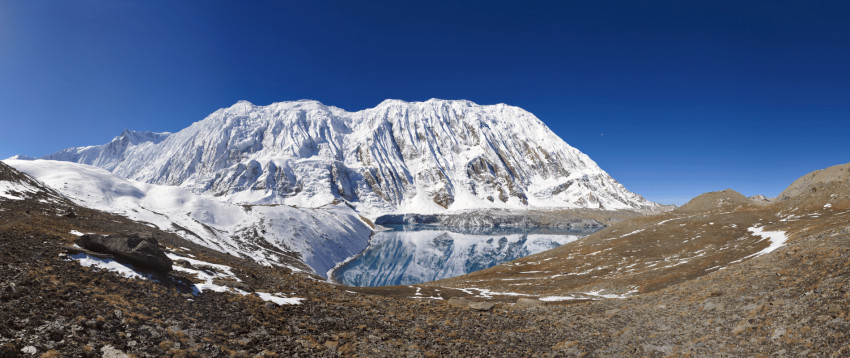
The Annapurna Circuit Trek in Nepal is a breathtaking journey that takes you through some of the world's most stunning landscapes, from lush subtropical forests to high-altitude desert terrain. If you're a beginner trekker seeking an adventure of a lifetime, this complete guide will provide you with all the essential information you need to embark on the Annapurna Circuit Trek with confidence.
Overview of the Annapurna Circuit
The Annapurna Circuit is a classic trek in the Annapurna region of Nepal. It's known for its diverse landscapes, rich culture, and the opportunity to witness some of the highest peaks in the world, including Annapurna I, standing at 8,091 meters (26,545 feet) tall. The trek takes you through a variety of ecosystems, starting in lowland villages and gradually ascending to the high mountainous regions.
Best Time to Trek
The Annapurna Circuit is best experienced during the spring (March to May) and autumn (September to November) seasons. During these months, the weather is relatively stable, and the views are spectacular. Spring brings lush rhododendron blooms, while autumn offers clear skies and comfortable temperatures. Winter and monsoon seasons can make the trek challenging, with snow and rain making the trails slippery and potentially hazardous.
Permits and Regulations
Before starting your Annapurna Circuit Trek, it's crucial to obtain the necessary permits. You'll need both the Annapurna Conservation Area Permit (ACAP) and the Trekker's Information Management System (TIMS) card. These permits are available in Kathmandu and Pokhara and can be arranged through a trekking agency or individually. Always carry these permits with you during the trek, as checkpoints may ask for them.
Physical Preparation
The Annapurna Circuit Trek is physically demanding, and being adequately prepared is essential. Begin a training regimen several months before your trip. Cardiovascular exercises like hiking, running, and cycling will help improve your stamina. Strength training for your legs, core, and upper body is also beneficial, as you'll be carrying a backpack and traversing varying terrains.
Packing Essentials
Packing wisely is crucial for a successful trek. Here's a list of essentials to bring:
1. Clothing: Layering is key to adapting to changing temperatures. Pack moisture-wicking base layers, insulated mid-layers, a waterproof jacket, hiking pants, thermal underwear, and a warm hat and gloves.
2. Footwear: Invest in comfortable, waterproof hiking boots with good ankle support. Don't forget moisture-wicking socks.
3. Backpack: Choose a comfortable, well-fitting backpack with adjustable straps to distribute weight evenly.
4. Sleeping Bag: Bring a quality sleeping bag suitable for low temperatures.
5. Trekking Poles: These can provide stability on uneven terrain and reduce strain on your knees.
6. Water Purification: Carry a water purification system (tablets or a filter) to ensure safe drinking water.
7. First Aid Kit: Include essentials like band-aids, antiseptic wipes, pain relievers, and any personal medications.
8. Toiletries: Travel-sized toiletries, including biodegradable soap, are essential for maintaining hygiene.
9. Electronics: A headlamp or flashlight, spare batteries, a power bank, and a camera (if desired) are important.
10. Documents: Keep your permits, passport, travel insurance details, and itinerary in a waterproof bag.
Accommodation
The Annapurna Circuit offers various accommodation options, mainly in the form of teahouses or guesthouses. These provide basic amenities such as a bed, meals, and sometimes hot showers. Booking in advance is typically not necessary, as there are plenty of options along the route. However, during peak seasons, it's a good idea to arrive at your destination early to secure a spot.
Food and Water
The teahouses and guesthouses along the trail offer a variety of food options, including local and international dishes. It's recommended to eat vegetarian to reduce the risk of foodborne illnesses. Hydration is essential, so carry a reusable water bottle and use your purification system to refill it. Alcohol is best avoided due to its dehydrating effects at high altitudes.
Altitude Sickness
Altitude sickness, also known as acute mountain sickness (AMS), can affect trekkers at higher elevations. It's essential to acclimatize properly by ascending gradually and allowing your body time to adjust. Stay hydrated, eat well, and pay attention to any symptoms of AMS, such as headaches, nausea, or dizziness. If symptoms worsen, descend to lower altitudes immediately.
Cultural Sensitivity
Respect the local culture and traditions of the people in the Annapurna region. Be mindful of your behavior, dress modestly, and always ask for permission before taking photos of locals. Learning a few basic Nepali phrases can go a long way in building rapport with the locals.
Trekking Solo or with a Guide
You can choose to trek the Annapurna circuit independently or with the assistance of a local guide and porter. While trekking independently offers more flexibility, hiring a guide can enhance your experience by providing cultural insights, navigation assistance, and support. If you opt for a guide, make arrangements in advance.
The Annapurna Circuit Trek is an unforgettable adventure that offers a blend of natural beauty, cultural richness, and physical challenge. With the right preparation, permits, and a willingness to adapt to the conditions, beginners can successfully complete this trek and create lifelong memories. Remember to respect the environment and the people you encounter along the way, and you'll return with not only amazing stories but also a deeper appreciation for Nepal's natural and cultural wonders.






